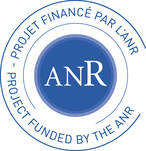Why do we observe species occurring in certain habitats but not in others? Since the days of Darwin researchers debate this fundamental question and the relative role of environment versus species’ interactions in driving species distribution patterns. Summarized as the “Species Interactions – Abiotic Stress Hypothesis” (SIASH), theory suggests that abiotic forces set range boundaries under stressful conditions, while biotic interaction are most relevant in benign environments.
While central to basic and applied research this hypothesis 1) lacks the integration of contemporary evolution and 2) remains largely untested empirically. Therefore, this project follows two complementary objectives: 1) Expansion and update of theory to include eco-evolutionary feedbacks, i.e., evolution of dispersal, local adaptation and correlated life-history traits, which are central drivers of range dynamics. 2) Experimental testing in microbial model landscapes subject to a temperature gradient using experimental evolution and protists as model organisms.
While central to basic and applied research this hypothesis 1) lacks the integration of contemporary evolution and 2) remains largely untested empirically. Therefore, this project follows two complementary objectives: 1) Expansion and update of theory to include eco-evolutionary feedbacks, i.e., evolution of dispersal, local adaptation and correlated life-history traits, which are central drivers of range dynamics. 2) Experimental testing in microbial model landscapes subject to a temperature gradient using experimental evolution and protists as model organisms.
E-SIASH team
E-SIASH publications
|
[7] Bonte D., Keith S. A. & Fronhofer E. A. (2024) Species interactions and eco-evolutionary dynamics of dispersal: the diversity dependence of dispersal. Philosophical Transactions of the Royal Society B-Biological Science 379: 20230125.
Editorial Theme Issue "Diversity-dependence of dispersal: interspecific interactions determine spatial dynamics" compiled by Dries Bonte, Emanuel A. Fronhofer, Sally Keith
|
[6] Fronhofer E. A., Bonte D., Bestion E., Cote J., Deshpande J. N., Duncan A. B., Hovestadt T., Kaltz O., Keith S. A., Kokko H., Legrand D., Malusare S. P., Parmentier T., Saade C., Schtickzelle N., Zilio G. & Massol, F. (2024) Evolutionary ecology of dispersal in biodiverse spatially structured systems: what is old and what is new? Philosophical Transactions of the Royal Society B-Biological Sciences 379: 20230142.
[5] Bestion E., Legrand D., Baines C. B., Bonte D., Coulon A., Dahirel M., Delgado M., Deshpande J. N., Duncan A. B., Fronhofer E. A., Gounand I., Jacob S., Kaltz O., Massol F., Matthysen E., Parmentier T., Saade C., Schtickzelle N., Zilio G. & Cote J. (2024) Species interactions affect dispersal: a meta-analysis. Philosophical Transactions of the Royal Society B-Biological Science 379: 20230127.
[4] Fronhofer E. A., Corenblit D., Deshpande J. N., Govaert L., Huneman P., Viard F. Jarne P. & Puijalon S. (2023) Eco-evolution from deep time to contemporary dynamics: the role of timescales and rate modulators. Ecology Letters 26 (S1): S91-S108.
[3] Rosenbaum B. & Fronhofer E. A. (2023) Confronting population models with experimental microcosm data: from trajectory matching to state-space models. Ecosphere 14: e4503.
[2] Malusare S. P., Zilio G. & Fronhofer E. A. (2023) Evolution of thermal performance curves: a meta-analysis of selection experiments. Journal of Evolutionary Biology 36: 15-28.
[1] Deshpande J. N. & Fronhofer E. A. (2022) Genetic architecture of dispersal and local adaptation drives accelerating range expansions. Proceedings of the National Academy of Sciences of the United States of America 119: e2121858119.

































